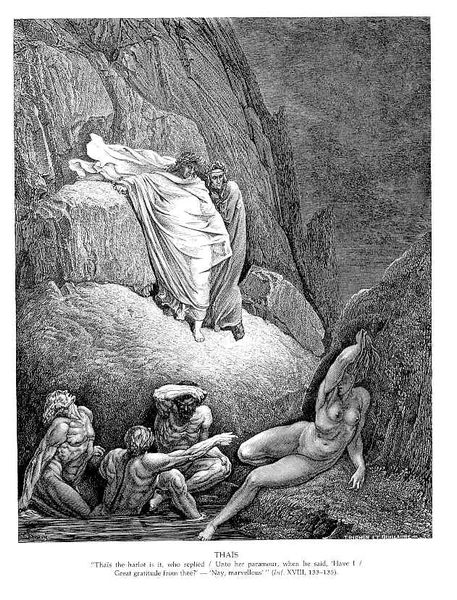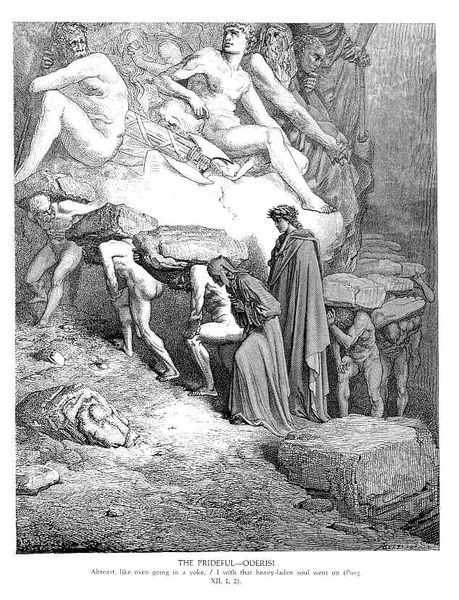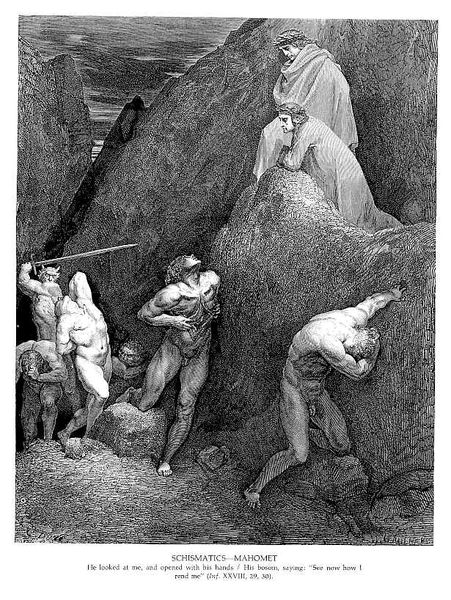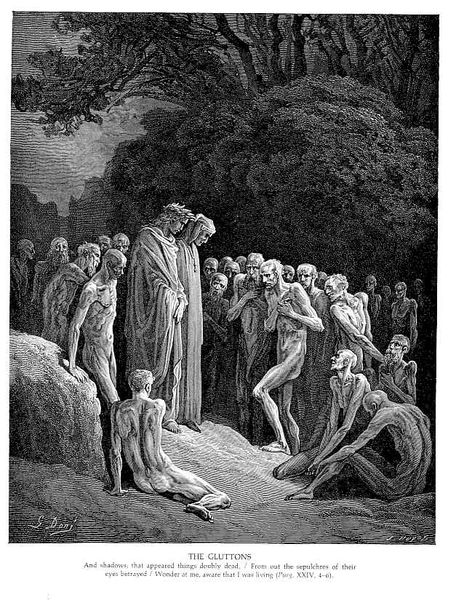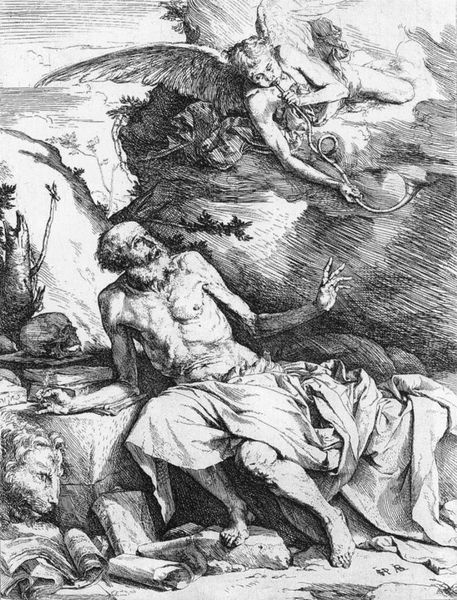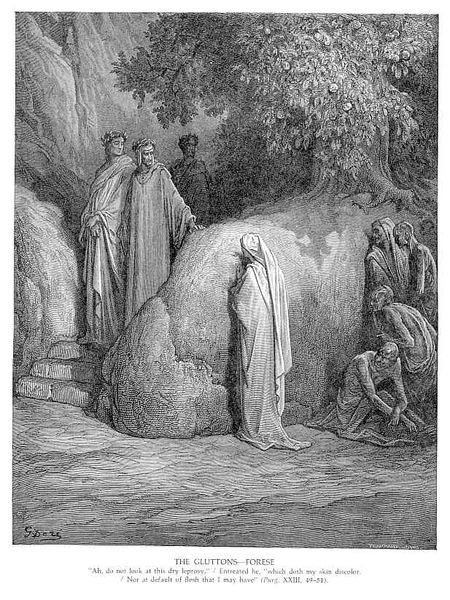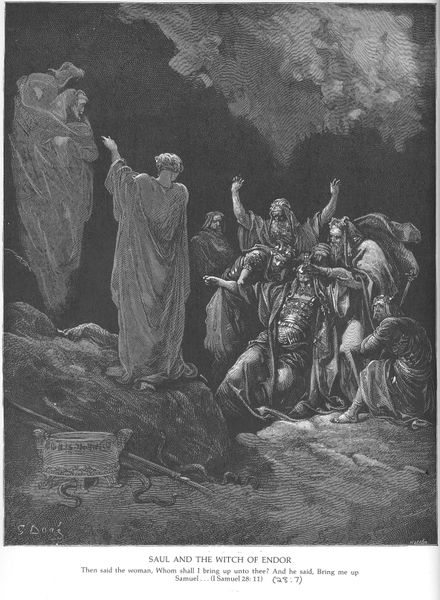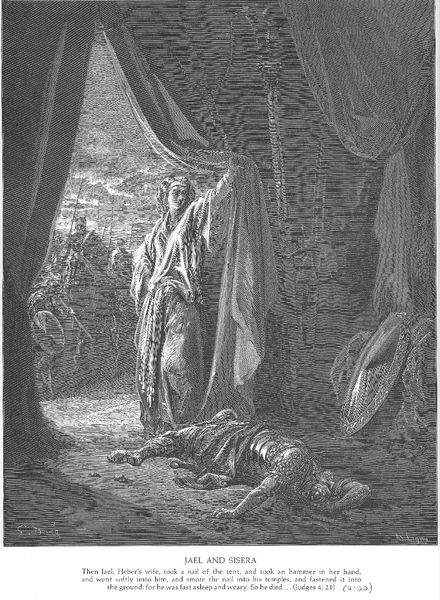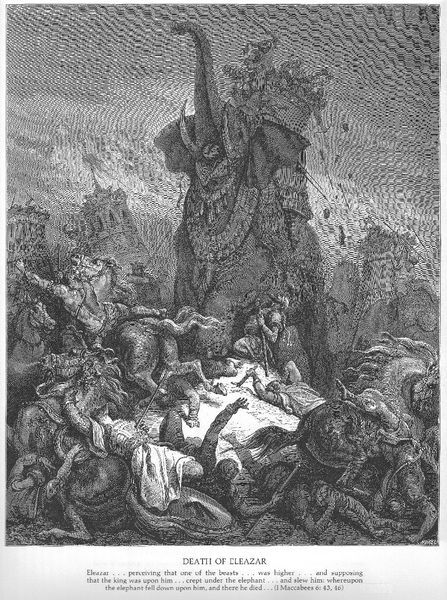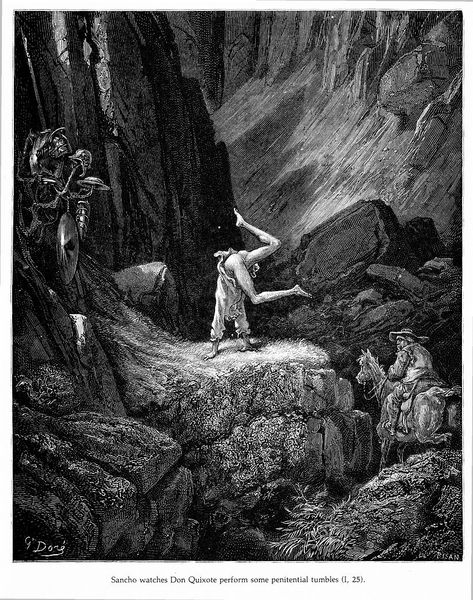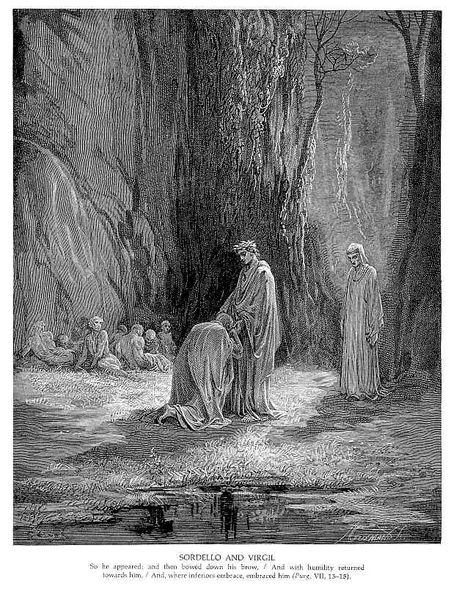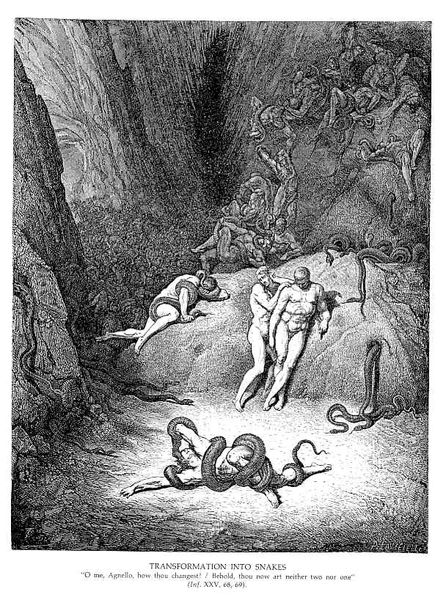
drawing, print, engraving
#
drawing
#
medieval
#
narrative-art
# print
#
figuration
#
romanticism
#
history-painting
#
engraving
Copyright: Public domain
Curator: The work before us is an engraving entitled "Geri Del Bello". While the specific date of its creation isn't provided, its style strongly aligns with the Romanticism movement and thematic interests typical of historical narrative prints. Editor: Woah, it's pretty intense. All that raw agony just hits you. Those jagged cliffs framing Dante and Virgil in the background... they feel like gaping wounds in the earth itself. A very bleak scene, wouldn't you say? Curator: Indeed. Its graphic style and themes point to Gustave Doré's illustrations of Dante's Inferno. We observe the stark contrast between light and shadow and how this contrast evokes deep emotions from viewers and illustrates key dramatic elements, consistent with the broader Romantic aesthetic and Doré's body of work. What do you think about the role of the Romantic Movement within that cultural context? Editor: It’s visceral, right? The hacked bodies strewn all over the crags makes me wanna look away. It’s Romanticism turned up to eleven! Not just heroic suffering, but actual… violation. That headless dude clutching his head. Oh, geez. Makes you consider our own modern obsessions with sensationalism. How much are we just refined rubberneckers these days, consuming each other’s tragedies as clicks and likes? I love the way Doré highlights our potential for ruthlessness, as we can consume so much, and then do very little. Curator: The focus on Dante and Virgil as witnesses further emphasizes the role of the observer in the theatre of human suffering. There is no glory in Doré's rendering of violence. Editor: I like the way you're thinking here. In a lot of other ways, his vision is still influencing how we imagine horror. But if Romanticism were all puffy shirts and star-crossed lovers, we’d never have the guts to face the dark stuff in our own souls. Thank you for sharing. I am much more attuned to these important matters now. Curator: Indeed. Through the intersection of historical context and artistic intention, we've gained deeper insight into its social relevance, the narrative of violence, and Doré's contribution. It's the beauty, or lack thereof, that reflects his work on this topic.
Comments
No comments
Be the first to comment and join the conversation on the ultimate creative platform.
